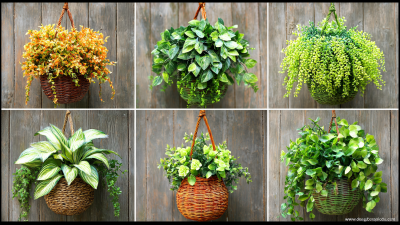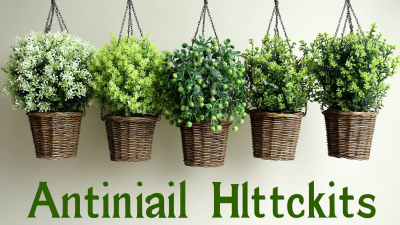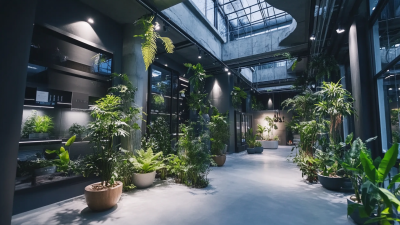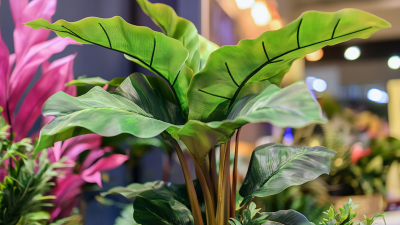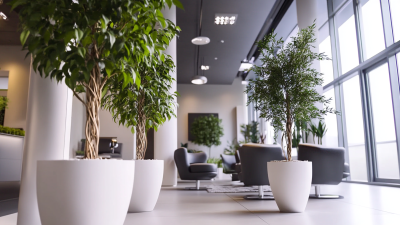
When it comes to enhancing the aesthetics of both indoor and outdoor spaces, Artificial Plants for Hanging Baskets have gained immense popularity among homeowners and interior designers alike. According to a recent market research report by Allied Market Research, the global artificial plants market is projected to reach $5.4 billion by 2025, driven by a growing demand for low-maintenance greenery that adds character without the fuss of traditional plants. These versatile decorative solutions not only bring a touch of nature into various environments but also cater to diverse design preferences, making them ideal for hanging baskets. With advancements in technology and realistic designs, choosing the best artificial plants can elevate any space while ensuring consistent beauty year-round. In this guide, we’ll explore essential factors to consider when selecting the ideal artificial plants for your hanging baskets, helping you create the perfect ambiance wherever you choose to display them.
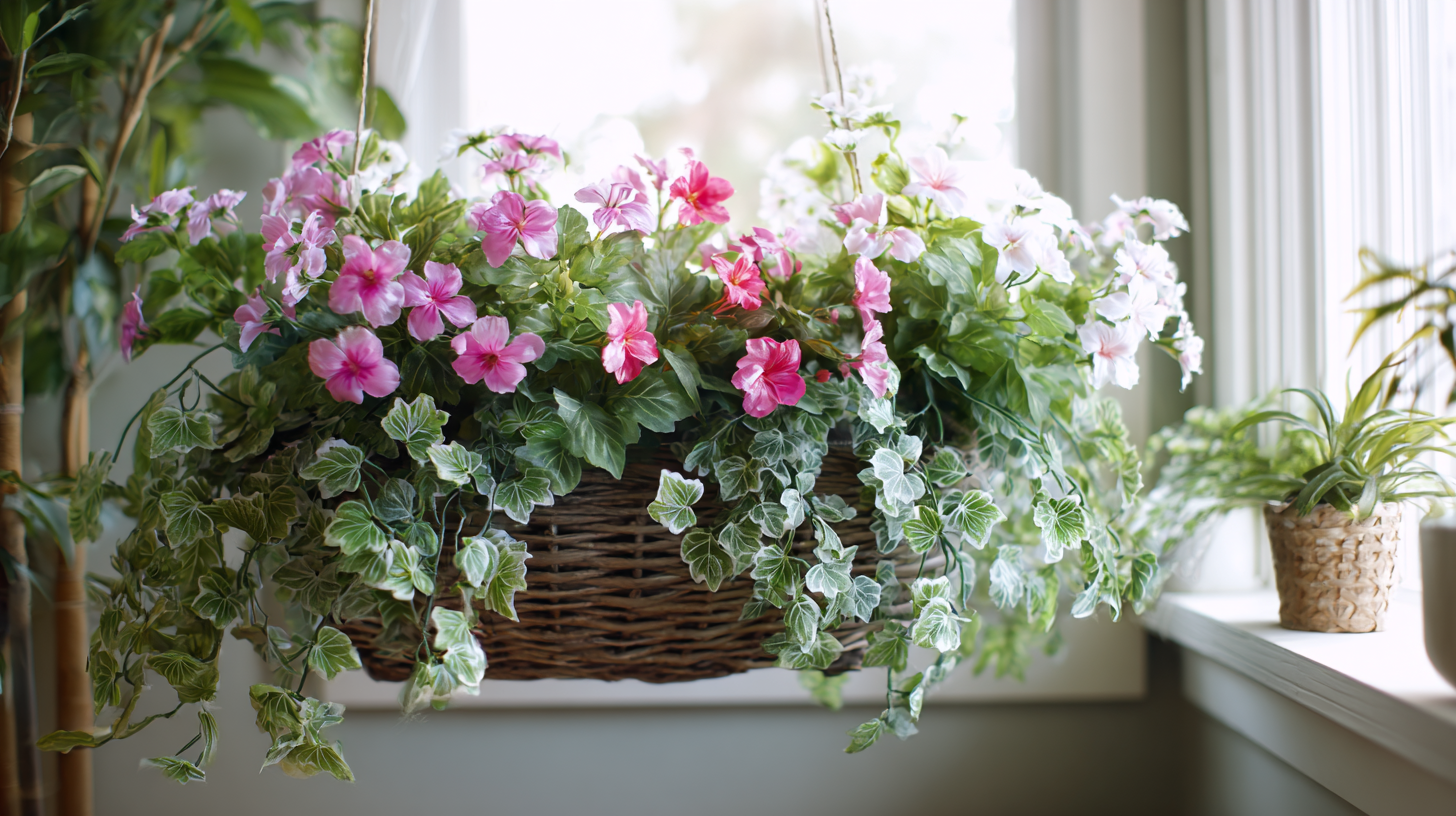
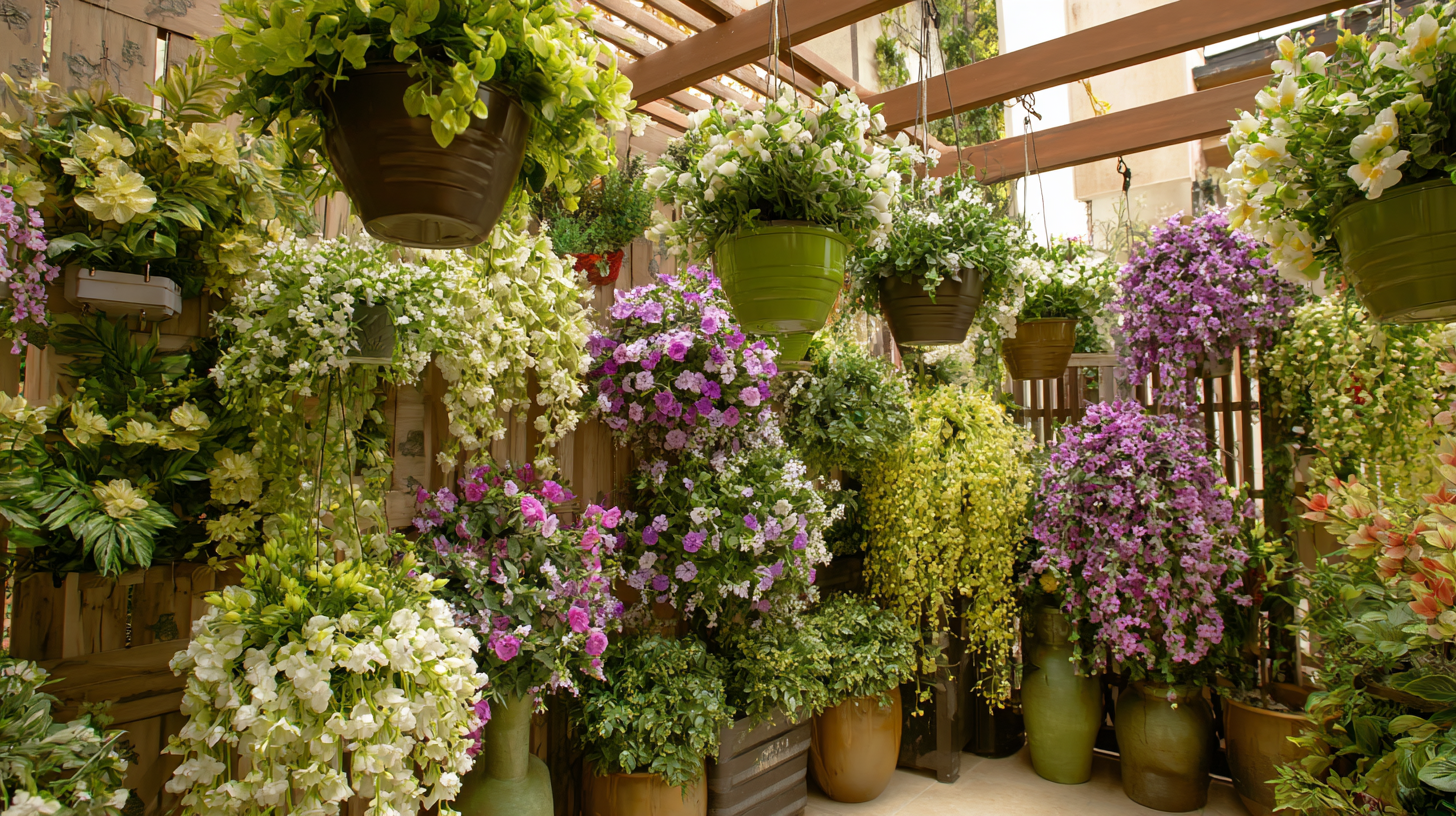 When choosing artificial plants for hanging baskets, several factors come into play to ensure they enhance your space effectively. First, consider the size and height of the basket. Larger plants can make a statement, while smaller varieties are perfect for a more subtle touch. Additionally, assess the overall dimensions of the area; a well-sized plant adds to the room's aesthetics without overwhelming it.
When choosing artificial plants for hanging baskets, several factors come into play to ensure they enhance your space effectively. First, consider the size and height of the basket. Larger plants can make a statement, while smaller varieties are perfect for a more subtle touch. Additionally, assess the overall dimensions of the area; a well-sized plant adds to the room's aesthetics without overwhelming it.
Tip: Always visualize the placement of your hanging basket in your space before making a purchase. This can help you determine the right scale and style that will complement your existing decor.
Color is another critical factor to consider. Opt for hues that blend well with the surrounding environment or create a striking contrast, depending on the mood you want to establish. Look for multi-tonal designs that mimic the natural variety found in real plants.
Tip: To create a more realistic feel, choose artificial plants that incorporate different textures, such as glossy leaves mixed with matte or fuzzy ones, to replicate the depth found in nature.
When selecting artificial plants for hanging baskets, the choice of materials is crucial for achieving a realistic look that enhances your home decor. High-quality materials such as silk, polyester, and plastic can significantly affect the overall aesthetic and durability of your artificial plants. Silk plants are often favored for their lifelike appearance, as they mimic the soft texture and vibrant colors of real foliage. They are ideal for indoor spaces where the light is filtered, creating an elegant and natural ambiance.
Polyester is another excellent choice, offering sturdiness and resistance to fading over time. This material can withstand the occasional exposure to sunlight, making it suitable for both indoor and outdoor settings. Moreover, high-density polyethylene (HDPE) is increasingly popular for its weather-resistant properties, ensuring that your hanging baskets remain visually appealing, regardless of environmental conditions. By choosing the right materials, you can enhance the lifelike quality of your artificial plants while ensuring they complement your space beautifully.
This chart shows the popularity of different materials used for artificial plants in hanging baskets, reflecting current trends in home decor.
When choosing artificial plants for hanging baskets, it's important to consider popular styles and colors that align with your interior theme. For a modern space, sleek and minimalist designs featuring succulents or simple leafy plants can enhance the overall aesthetic. Opt for colors such as lush greens or soft greys, which complement contemporary furniture and decor while adding a touch of nature without overwhelming the space.
In contrast, rustic or farmhouse interiors benefit from more vibrant and textured options like trailing vines or faux flowers in warm hues. Rich colors such as burnt orange, deep reds, or earthy browns resonate well with wooden accents and cozy textiles, creating a welcoming atmosphere. Exploring these styles allows you to seamlessly integrate artificial plants into your home, adding life and charm to any hanging basket arrangement while ensuring they remain cohesive with your existing decor.
When selecting artificial plants for hanging baskets, size and scale play a crucial role in ensuring they complement the surrounding space effectively. According to a report by the American Society of Landscape Architects, using plants that are appropriately scaled to their environment not only enhances aesthetic appeal but also contributes to a sense of balance and harmony within the space. For smaller areas, opting for compact, cascading varieties can create a lush look without overwhelming the space, while larger spaces benefit from bolder, more dramatic choices that can serve as focal points.
Moreover, the choice of materials can also impact the perceived size of artificial plants. A study by the International Society of Horticultural Science highlights that lighter colors and varied textures can visually expand a space, making them ideal for smaller hanging baskets. Conversely, for larger installations, darker and denser foliage can ground the display and provide a statement piece that draws the eye. Ultimately, understanding the interplay of size, scale, and materiality is essential for creating visually captivating hanging basket arrangements that enhance any environment.
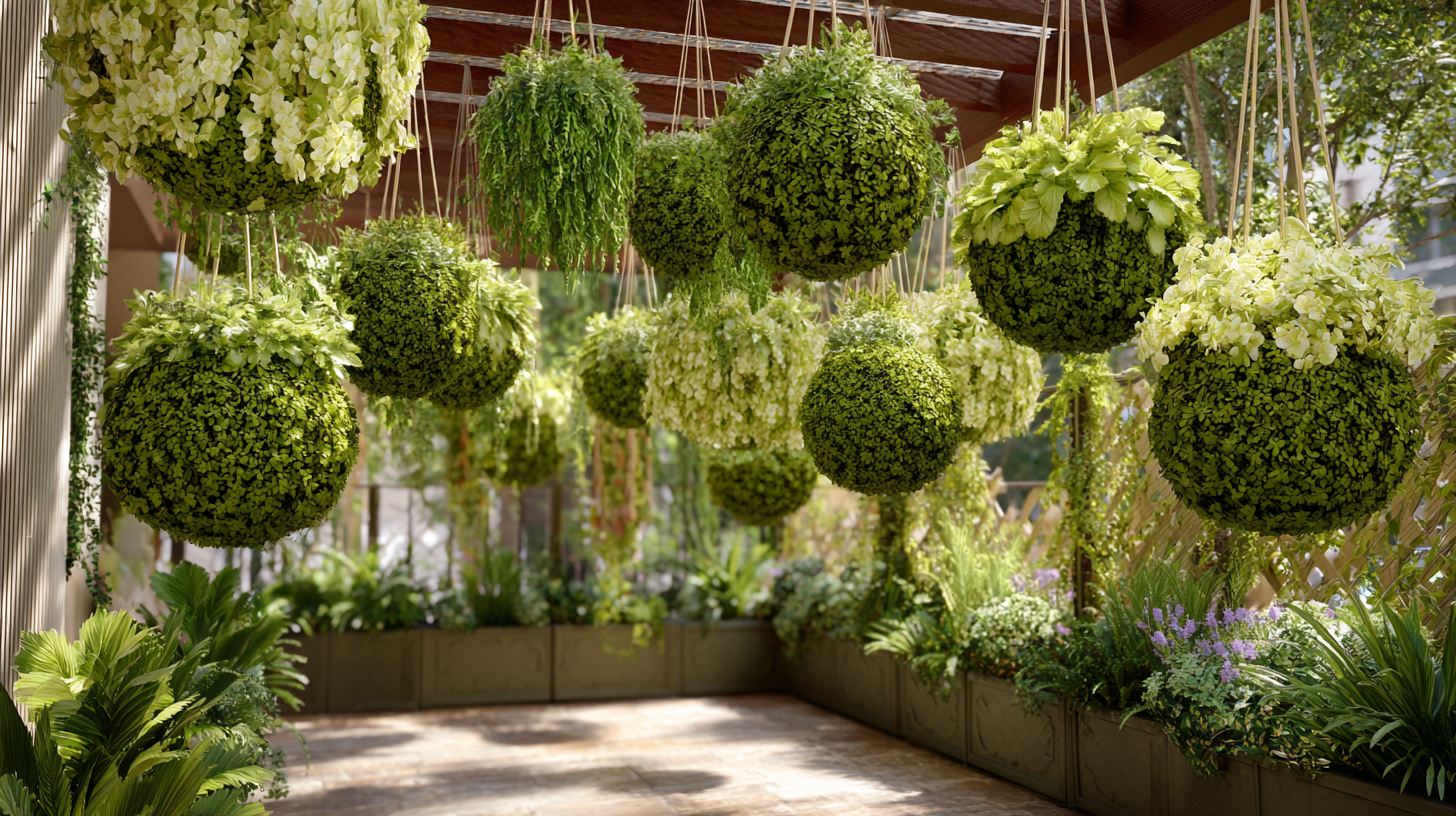
When it comes to maintaining artificial plants in your hanging baskets, a few easy care tips can help ensure they remain looking fresh and inviting. First, dusting the plants regularly with a microfiber cloth or a soft brush should be part of your routine. This simple step prevents the buildup of dirt and grime that can dull their appearance. For deeper cleaning, especially after a season of hanging outdoors, a gentle wash with warm soapy water can rejuvenate the look of the leaves. Just remember to rinse thoroughly and allow them to dry completely before rehanging.
Additionally, placement is key to keeping your artificial plants looking their best. Avoid direct sunlight for prolonged periods, as UV exposure can cause fading over time. Instead, consider positioning your hanging baskets in shaded areas or indoors where they are less likely to be subjected to harsh lighting. If your artificial plants are located in a high-traffic area, you might want to periodically reposition them to protect against accidental bumps and dust accumulation. By following these maintenance tips, you can enjoy the beauty of your artificial plants in hanging baskets with minimal effort.
| Plant Type | Ideal Space | Maintenance Tips | Lifespan |
|---|---|---|---|
| Faux Fern | Indoor/Outdoor | Dust weekly and rinse occasionally | 5-10 years |
| Silk Petunias | Indoor | Avoid direct sunlight, dust regularly | 3-7 years |
| Artificial Ivy | Outdoor | Rinse with a damp cloth monthly | 5-10 years |
| Plastic Succulents | Indoor/Outdoor | Wipe with a dry cloth; no water needed | 5-10 years |
| Fabric Lavender | Indoor | Keep out of direct sunlight; dust once a month | 3-5 years |
